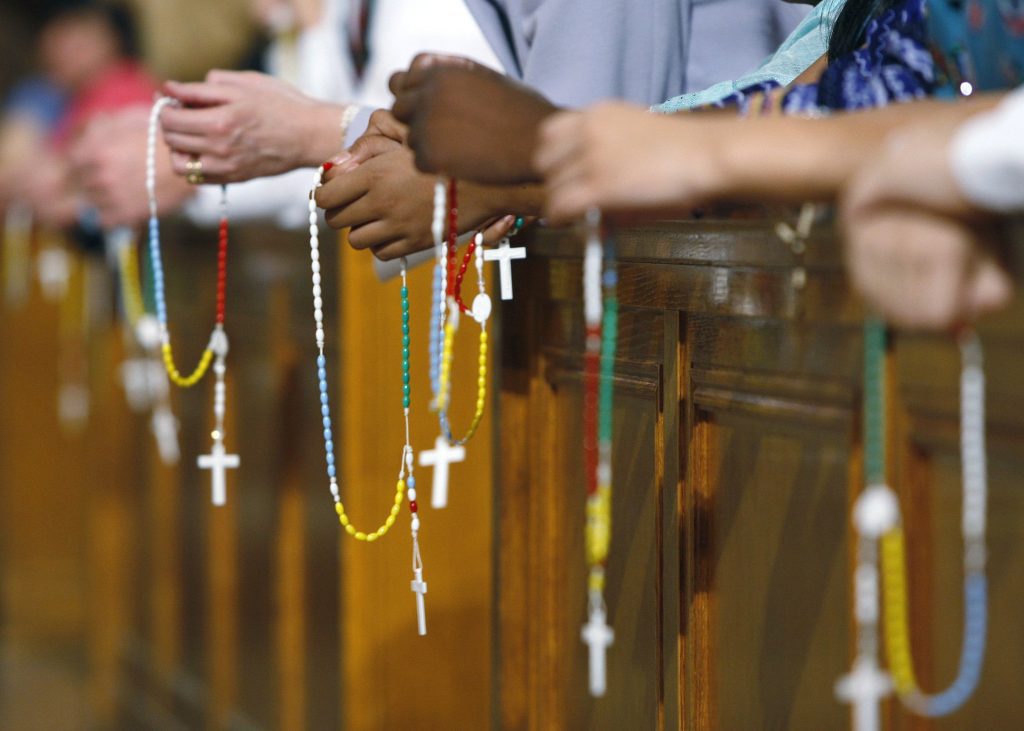
Where and when the Rosary began is unknown. The use of beads as an aid in prayer has a long history both in the Catholic Church and in other religions. The chain of beads establishes a framework, a setting, a pace for the prayer, and the repetition provides a background for meditation.
Even though the origin of the Rosary is unknown, it is undeniable that its popularity grew significantly through the preaching of Saint Dominic, who died in 1221. Dominic encouraged the Rosary as a remedy to heresy. The meditation on the mysteries developed a foundation of the truths of the faith. This saint also saw the prayer as an antidote to sin. As Dominic and his followers preached throughout Europe, they encouraged the laity to regularly pray the Rosary.
Many popes have also encouraged this devotion. One notable example comes from the reign of Pope Pius V (1566–1572). At that time the Turkish Muslims were actively seeking to conquer Christian Europe and were having significant success in their endeavors. Europe was in real peril.
Pope Pius V asked all the faithful to pray and ask for Mary’s intercession that the Turkish threat would be halted. In particular, Pius encouraged the praying of the Rosary. In the famous Battle of Lepanto on October 7, 1571, the Christian forces defeated the Turkish fleet and effectively ended the threat of conquest by the Muslims.
To acknowledge the effectiveness of praying the Rosary and to thank the Blessed Mother for her intercession, Pius established the Feast of the Holy Rosary to be celebrated each October.
The word rosary comes from the Latin rosarius, which means “garland” or “bouquet of flowers.” It is an apt word for a bouquet of prayers offered to God. The word bead is an Old English term that originally meant “a prayer.”
The rosary has 59 beads, a crucifix, and a medal, with certain prayers for each of these different pieces.
The Rosary is a Scripture-based prayer. It begins with the Apostles’ Creed, which summarizes the great mysteries of the Catholic faith. The Our Father, which introduces each mystery, is from the Gospels. The first part of the Hail Mary is the angel’s words announcing Christ’s birth and Elizabeth’s greeting to Mary. St. Pius V officially added the second part of the Hail Mary. The Mysteries of the Rosary center on the events of Christ’s life. There are four sets of Mysteries: Joyful, Sorrowful, Glorious and––added by Saint John Paul II in 2002––the Luminous.
To learn more about the history of the Rosary, click here
